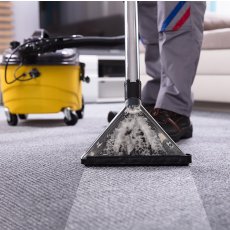Before and After-Care Advice for the Massage Client
What is a Massage?
A massage is a deep relaxation treatment. It can focus on a special body part – such as the head, the feet or the back, or it can be a full-body massage. Oils are usually used – and essential oils are added if the massage is an aromatherapy one.
Preparation for Massage
- Exfoliate your whole body prior to your treatment and leave it clean of any products.
- Remove all jewellery.
- Leave your worries behind you.
- Arrive 5 minutes before your treatment so that you’ll be completely relaxed before the beginning of the treatment.
The Massage
Once in the treatment room, you will be asked to remove all clothing except your under-pants. You will be asked to lie on the massage bed face down and to cover yourself with a sheet. The treatment will usually start with disinfecting your feet with some wipes, then the therapist will massage the back of your legs and will work up to your back and back of arms. Then you will be asked to flip over and the therapist will massage the front of your legs, your arms, your shoulders, décolleté and scalp. Massaging of your tummy and breasts (for women) is optional.
Once Leaving the Salon
- Try to relax and take it easy for the rest of the day – if you can and feel the need to, nap.
- Drink plenty of water for 24 hours after your massage as your lymph nodes, which have been stimulated, are removing toxins from the body. Your urine might be much darker than usual – this is due to the toxins leaving your body.
- Avoid heat treatments (hot baths / showers, body wraps, saunas, sunbeds) for 24 hours.
- Avoid alcohol, smoking, caffeine and fizzy drinks as they can dehydrate your body and add more toxins to your body. This would reverse the effects of the massage, since the massage is in-turn aiding the body in removing the accumulation of toxins.
- Avoid eating a heavy and especially spicy meal so your body can focus on natural healing and detoxifying itself.
‘Healing Reactions’ may take place after your massage and are completely normal-showing that the massage is working well and your body is responding to the treatment. Indications of this may result in the following:
- Fatigued or tired (although this could be a sign of deep relaxation, especially if you are usually always on the go)
- Increased sweating, thirst or urination
- Irritable or energized
- Heightened emotions (low or high)
- Runny, stuffy or blocked nose
- Sound sleeping and vivid dreams
Maintaining your Results
Massages are recommended often, especially due to the fast-paced and stressful lives that we are living. To maintain the results, you can try the following:
- Take a warm bath once a week – this will help to loosen up your muscles.
- Relax and distress – listen to music, burn some essential oils, etc.
- Find time to exercise (especially strength training) and stretch (yoga is excellent).
- Exfoliate and moisturize your body regularly.
- Stand up and walk around and stretch – especially if sitting a long time at a desk and / or on the computer.
- Throughout the day, massage your shoulders, and other areas that feel stiff.
- Sit in a correct position and you might want to raise your legs a bit.
What Your Skin Therapist Shouldn’t Do During the Facial Massage
Stop to think about your last facial treatment, and see if you agree with me or not.
So first the therapist cleansed and exfoliated your face and décolleté, did the treatment stage and now it is time for your massage. You are all there relaxed and the therapist starts massaging. Unfortunately, a lot of therapists begin massaging your shoulders and upper back, then they might move to your upper arms, and lastly to your face. The idea behind this is excellent, because we tend to hold a lot of tension in our shoulders, and it is important to relax those muscles to let the blood and oxygen flow to your face, resulting in a more beneficial facial massage and a vibrant look.
However, this is where I do not agree – in the beginning the therapist only cleansed your face and décolleté, so technically at the moment, your shoulders, upper back and upper arms are not at their cleanest. Consequently the ‘dirt’ from your shoulders is brought up to your face!!!
The solution to this I found is to do the shoulders and arms separately from the face, washing my hands in between each step. So, when the steamer is on, I massage the arms making sure that I go up under the upper arm and dig into those tensed muscles in the shoulder, to melt any tension. Then after removing any blackheads and waxing if required, I start the face and neck massage. While the mask is on and working, I then go on to massage the décolleté, shoulders and upper back, and on to a dry, relaxing, deep- pressure-point scalp massage.
So my advice is, when you go for your next facial, discuss the above with your therapist before the treatment starts, so the therapist can adjust her steps accordingly.
Before and After-Care Advice for the Body-Wrap Client
What is a Body-Wrap?
A Body-Wrap is usually a body contouring wrap. A mud or gel is applied onto your skin, and then the body area is wrapped in plastic, and left for 30 minutes or so to work and penetrate. A body-wrap will leave your skin glowing and deeply hydrated, and depending on the body –wrap you can have some or all of these benefits – decrease of water-retention, decrease of cellulite, inch-loss, detoxification, toned skin, contoured body.
Preparation for Body-Wrap
- Have a warm shower – this will help for the product to penetrate more – and do not apply any products on your body.
- Exfoliate – although at times it is performed during the treatment.
- Wear old underwear and take an extra pair of under-pants as yours will tend to get wet. However, usually the therapist will give you disposable underwear.
- Do not eat a heavy meal.
The Body-Wrap
Treatment takes approximately 1 hour. You will be asked to wear disposable underpants and remove all your clothing. You will be asked to lie on the treatment table. Depending on the treatment, at times a body exfoliation is done – either using a product or dry-body brushing. A mud or a gel will be applied to areas of the body, then you will be wrapped up in cling film or foil or plastic. Blankets would be placed on top and you would relax for about 30 minutes, depending on the body-wrap. During this time, you can either doze off, or read, or the therapist might perform a scalp massage. At the end, depending on the body-wrap, you might have to take a shower or else if the ingredient penetrates and is to be left on the skin, a body lotion is massaged in.
Once Leaving the Salon
- Drink plenty of water for the next 48 hours.
- Eat plenty of raw fruit and vegetables.
- Do not eat a large / heavy meal for the next 24 hours.
- Avoid alcohol, caffeine or fizzy drinks for at least 24 hours after the treatment.
- Avoid bathing or showering for preferably 12 hours, to allow the products to continue working.
Maintaining your Results
- Consider a course of body wraps to gain long-lasting effects.
- Exfoliate regularly, and you might consider applying a specialized body cream for your specific concern.
- Exercise regularly.
Before and After-Care Advice for the Facial Client
What is a Facial?
In short, a facial is a treatment for the face, where the face is cleansed, steamed, any blackheads are removed, the face is treated and massaged, a mask is applied and finally a moisturizer and a sunscreen. It usually lasts 60 – 90 minutes. And at times, machinery can be used. At the end you will have a healthy glow. When facials are done as a treatment to treat a particular concern such as ageing, acne, pigmentation, etc, a series of treatments need to be performed.
Preparation for Facial
- It would be ideal if you can remove your make-up before arriving, especially if you wear it quite heavy. Or at least wear a light make-up application. The beauty therapist can remove your makeup, but this will take 5 minutes off your facial time.
- Let your beauty therapist know if you’d like to leave your mascara on. Some clients prefer this, as they feel naked without any mascara on, especially if they have some errands to run after.
- Do not come with a freshly washed and blow-dried hair style.
- Preferably after the facial, take it easy the rest of the day. A facial is a relaxing treatment, and it would be nice to extend this relaxing time for the rest of your day.
The Facial
For a detailed description of what happens during a facial, read the article What to Expect During a Facial.
Once Leaving the Salon
- Drink water.
- Keep make-up to a minimum for 12 hours, and use makeup which is mineral and / or vitamin enriched.
- Do not use any perfumed products or expose yourself to direct sunlight / saunas / sunbeds for 48 hours.
- Do not undertake further skincare treatments for 48 hours or use any exfoliating products for 72 hours.
- Avoid alcohol or smoking to keep your complexion clear and healthy.
Maintaining your Results
- Increase your water intake to 8 glasses a day.
- Decrease alcohol and smoking to keep skin healthy.
- Use products as advised by your beauty therapist – these should be specific for your skin type, concerns and budget.
- Use a sunscreen daily.
- For long-term results and as a preventative measure, book in for a facial once every 6 weeks (the ideal scenario) or once every 3 months (the least).
What to Expect During a Facial?
The other day I had a client who was telling me that before coming for her treatment, she was trying to explain to her 8 year old son what a facial is – well, the son couldn’t understand how someone can spend an hour ‘cleaning mummy’s face’!!!
So for those 8 year olds, for the first-timers, and for the seasoned client, I am going to go over the procedure of a facial step-by-step, and why each step is necessary. As many of you might be aware, on a spa’s menu of services there usually is a plethora of options under Facial Treatments. However, for this article’s purpose I am going to focus on a ‘basic’ facial, which is the foundation of many facials – it is usually one hour long and no treatment machinery is generally used.
THIS IS THE DETAILED CONSULTATION PART
1. Filling out a Skin Health Form
The front-desk or the skin treatment therapist will greet you, settle you in ‘their home’ and ask you to fill out a Health Form. This is done, so the therapist would know whether you have any particular skin concerns, any allergies, any contraindications (when particular procedures can’t be done because of some medication, particular home-care products that are used,…), what are your expectations, and other relevant details to the treatment.
2. Greeting
The skin treatment therapist escorts you to the treatment room. The therapist would greet you, clarify some information that was written on the Skin Health Form, ask for your expectations, and would give you a brief outline on what treatment will be performed on you and the products used during the treatment. You are then given instructions as to how to prepare for the facial
THIS IS THE CLEANSING PART OF A FACIAL ROUTINE:
3. Cleanse
The therapist begins by cleansing your eyes and face. At this point, therapist can judge the best cleanser for your face, since it is best to do a skin analysis after face is cleansed. Note: Before the facial cleanse is performed, at times the therapist can start with a short welcome massage.
4. Skin Analysis
Usually under a magnifying lamp or using other skin diagnostic equipment such as a Woods Lamp or a skin scanner, your skin is analyzed. Therapist might ask you questions as to your lifestyle, nutrition and home-care routine, which would lead to a better skin diagnosis, and hence a better, customized treatment plan.
5. Exfoliation
This is the deeper cleansing stage, where a facial exfoliation is performed to remove the dead skin cells, to achieve a more radiant look and for the following products to penetrate even more.
6. Steamer or Hot Towel
Heat on the skin will help to soften to pores, so that it will be easier for the removal of blackheads. However, some people can’t have heat on their skin, mainly if they have dilated capillaries, unless the steam’s purpose is to bring hydration to the skin.
7. Blackheads (comodones) Removal
Some people ‘don’t mind’ this stage, because it is a necessary evil, while others want to get it over and done with or not have any extractions at all. Unfortunately, most of the time the only way to remove blackheads is during a facial, where the trained skin therapist will remove the blackheads correctly without scarring or damaging the skin. Note: an appropriate product and a regular facial routine can help minimize the amount of blackheads.
THIS IS THE TREAT AND CORRECT STAGE OF A FACIAL ROUTINE
8. Massage
This is the best part of the facial for most and it is this stage which makes a huge difference between a ‘home’ facial and a facial performed by a skin therapist. Massage helps to stimulate the muscles, remove any toxins, tighten the skin, and because you are in a relaxed state the products tend to penetrate more. Different types of massage exist to treat different skin conditions – a lymphatic drainage can be performed on sensitive or acneic skin, while a more invigorating facial is usually chosen for mature skin.
9. Mask
The appropriate mask is chosen usually according to the outcome of your skin analysis, although sometimes this might change during the course of the facial, after the therapist would have worked on your skin and might realize that a different mask would be more appropriate. Sometime a choice of 2 masks can be done of different parts of the face – say a clay based mask for the oily t-zone, while a hydrating mask for the rest of the face, or a different mask for the face and the neck. In addition, at times the mask can be done before the massage, with the valid reasoning that your mask is always removed, while the massage cream chosen can be left on the skin and serve as a continuous treatment long after the facial is over.
10. Tone
Toning the skin is done to rebalance the pH of the skin and to make sure that there is no residue left from the mask. Toning can be also done at different stages throughout the facial.
11. Final creams + Sunscreen
Your eye cream goes first, then an appropriate ‘moisturizer’ is chosen. And at the very end a sunscreen is applied. (I prefer a separate product for a sunscreen, rather than having a moisturizer with an SPF.)
THIS IS THE PLANNING PART FOR THE ‘COURSE OF ACTION’
12. Assessment, Recommendations & Prescription
Here the skin therapist will do a sincere evaluation of your home maintenance – namely your skin treatment routine and products. A realistic skin care routine is jointly planned, and if appropriate new products are prescribed, based upon the thorough skin analysis and how the skin reacted during the facial.
This step is essential as doing a facial once every season or one every six weeks, and then not having a proper home care routine will get you nowhere.
13. Treatment Planning
A course of action is planned for the treatment room. Typically one is advised to have a professional facial once every six weeks, or at least one every season, to prepare the skin for the next season. Most of you have noticed that the skin changes with the seasons – hence a different facial is performed, or rather, a different choice of products is chosen. In addition, even the home care routine should adjust to the seasons, example one might need to add a mask targeted to a specific problem or change one’s day cream for something lighter in summer. However, if a condition is being treated, then a sequence of customized treatments is recommended within a specific time frame.
At the end of the treatment, the skin therapist will note in your Client Record Card:
- the skin analysis outcome,
- the products used during the facial,
- how your skin reacted to the different steps, and
- the best treatment plan for you.
So during your next facial, enjoy all the steps, knowing that every step chosen has its purpose.








 Vectora Design
Vectora Design